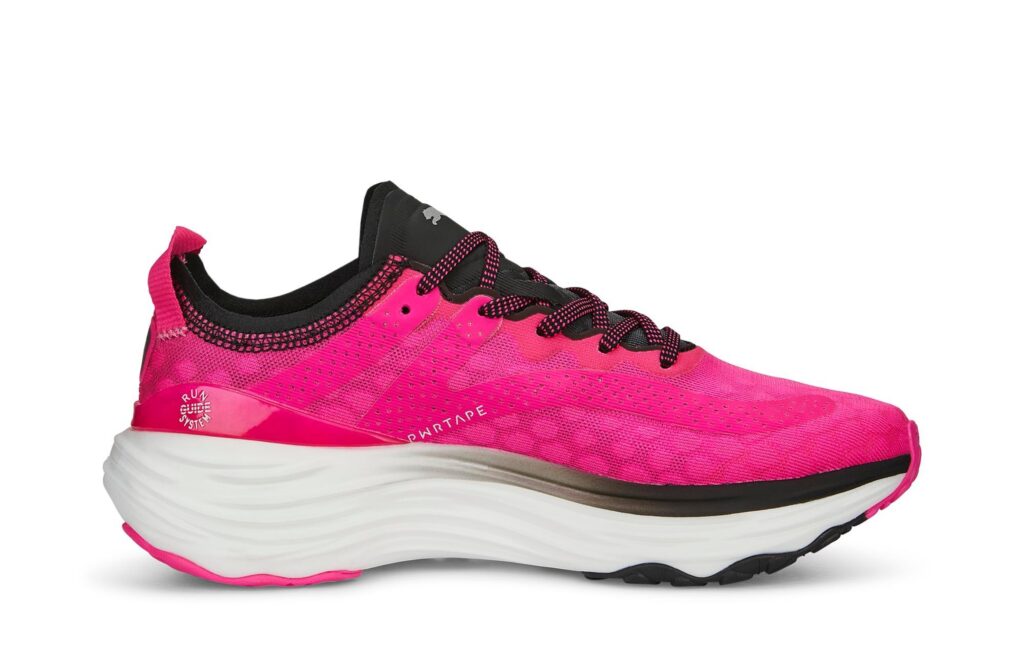Neutral or Stability? How Puma Made One Shoe For Every Foot Type
When Puma created the new ForeverRUN NITRO, they did so with the goal of beginning a new era of stability shoes that encourage an optimal running stride – and that suit all runners for every run.
The Brief
To make sure the new product would deliver on these expectations, Puma went into a design partnership with the experts from Kaiser Sport & Ortopædi. This is a team of specialists, based in Copenhagen, who produce insoles and custom lasts.
…create an enhanced guidance system that is controlled by the body itself.
Kaiser’s Frederik Munk explains the brief: “Firstly, make a product that is optimised for creating the best pre-conditions for preventing injuries; and secondly, create a guidance shoe (formerly referred to as a ‘stability’ shoe) that feels neutral to run in. So, through the insole and the last design – with no add-ons, or stuffing anything into the shoe – create an enhanced guidance system that is controlled by the body itself.”

The Inspiration
The anatomy of the foot is what gets this Danish team buzzing. Munk elaborates, with passion: “The foot has 33 joints, 26 bones, and around 80 local muscles. And for us, when we see a running shoe, we look at it from the point of view of ‘Does this geometry match how the foot works?’
“We then look at what we are trying to create to assist the foot, and how we can make it so that the foot works in this environment.”
The Testing
The ForeverRUN was tested in the lab, and performance was confirmed in the real world – 196 runners put the ForeverRUN to the test, logging more than 75 000 km in Puma’s biggest running wear test yet. According to the wear-test study, the runners found ForeverRUN to be more stable and that it helped to reduce pronation velocity, and reduced peak tibial shock/acceleration.
Thanks to ForeverRUN’s dual-density NITRO foam midsole, runners perceived the shoe to be softer and more responsive compared to a traditional stability shoe.

The Technical
Munk continues: “There were three stages to getting the technical aspects just right. Travel was Covid-restricted when we started, so there was a lot of shipping back and forth to get feedback from athletes and runners – and even from injured runners – using a motion capture system called Qualisys. This stage took two years.
“During this process we created a new and exciting protocol that divided the foot into three different segments. So instead of classifying foot movement as just either pronation or supination, we got specific, to cater for more variation in movements through the forefoot, midfoot and rearfoot of the foot strike.
“We also discovered the benefits of what we call ‘pronation velocity’; normally, pronation is measured in degrees. We found that when the speed of the motion of pronation is slowed down, the tissue around the shins, legs, hips and feet are subject to less force, and this can assist in preventing injury.
“But we wanted the shoe to feel like a neutral shoe, and we did this by creating a midsole with a lot of flex grooves. We actually hand-cut these, in the first prototypes! And it’s the forefoot bevel we created that actually reduces the pronation velocity.
“Lastly, there’s the insole, which has a bit more material than usual, to assist the NITRO cushioning while also giving good proprioceptive feedback.”
The Result
The new running shoe achieved its goal through a unique combination of cushioning with NITRO foam, and the enhanced guidance of the RUNGUIDE System from KSO.
“We’re very excited to introduce our newest footwear innovation for everyday running. It offers a combination of guidance and cushioning that appeals to runners who traditionally wear both neutral and stability products, ensuring an effortless run, kilometre after kilometre,” says Erin Longin, General Manager of PUMA’s Run Train Business Unit. “We know that all runners run differently, and that’s okay – we want to keep runners running, with a shoe that works for everyone.”
The Specs
- Stack heights: 26mm forefoot/36mm heel
- Weight: 224g (women), 274g (men)
- Key technologies: Dual-density super-critical NITRO foam; RUNGUIDE system; PUMAGRIP
Find the Puma ForeverRUN NITRO at Puma retail stores and Totalsports for R3 199 or buy them now online HERE.
READ MORE ON: puma Puma ForeverRUN NITRO road running shoes Road Shoes

